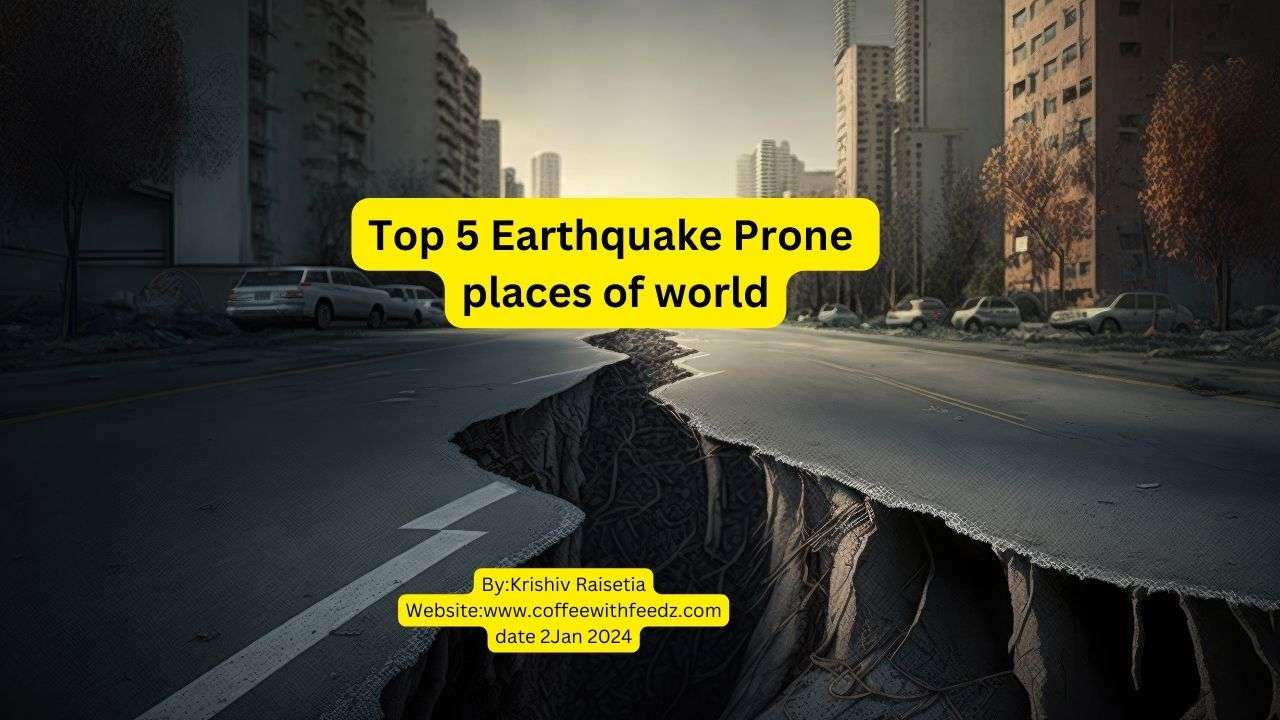Earthquake prone areas are typically located along tectonic plate boundaries.
Here are five regions known for their seismic activity:
- Pacific Ring of Fire(Earthquake prone areas)
- This is a horseshoe-shaped zone that encircles the Pacific Ocean, including countries like Japan, Indonesia, New Zealand, Chile, and the western coast of North and South America. The Ring of Fire is characterized by frequent earthquakes and volcanic activity.
- Himalayan Region:
- The collision between the Indian and Eurasian tectonic plates has created a seismically active zone in the Himalayan region. Countries include India, Nepal and parts of Pakistan/Bhutan and China experience significant amount of earthquake activity.
- Alpide Belt:
- The Alpide Belt starts from the Atlantic Ocean and goes to southern Europe and to the Himalayas(Asia). Countries like Italy, Greece, Turkey, and Iran are situated in this seismic zone.
- East African Rift:
- This boundary runs through East Africa, countries like Kenya, Ethiopia, Tanzania, and Uganda. The East African Rift is known for its geological activity, including earthquakes and volcanic eruptions.
- San Andreas Fault System, United States:
- The San Andreas Fault is a major transform fault in California that marks the boundary between the Pacific Plate and the North American Plate. Cities like San Francisco and Los Angeles are situated along this fault line, making it a well-known earthquake-prone area in the United States.
It’s important to note that earthquake activity can occur in other regions as well, and preparedness measures are crucial in any area prone to seismic events.
Remember the below tips on how to protect yourself during an earthquake:
- Drop, Cover, and Hold On:
- Drop to the ground to prevent being knocked over.
- Hide under a piece of heavy furniture.
- Hold on until the shaking stops. Be prepared for aftershocks.
- Stay Indoors:
- If you are indoors, stay there. Move away from windows, glass, and anything that could shatter during the shaking.
- Stay Away from Doorways:
- doorways are not the ideal places during an earthquake.
- If You’re Outside:
- find a place away from houses, trees and big buildings and if possible grounded yourself.
- If You’re in a Vehicle:
- Stay inside the vehicle until the shaking stops.
- Plan for Evacuation:
- Have an emergency kit ready with essential supplies such as water, non-perishable food, a flashlight, and first aid supplies.
- Secure Heavy Furniture and Objects:
- Anchor heavy furniture and appliances to the walls to prevent them from toppling over during an earthquake.
- Place heavy or breakable items on lower shelves.
- Practice Earthquake Drills:
- Conduct regular earthquake drills with your family or colleagues to ensure everyone knows what to do during an earthquake.
- Be Informed:
- Stay informed about earthquake risks in your area.
- Know how to receive emergency alerts and information.
- After the Earthquake:
- Be cautious of potential aftershocks. Drop, Cover, and Hold On if shaking resumes.
- Listen to emergency broadcasts for information on evacuation or other instructions.
Familiarize yourself with local emergency plans and procedures, and encourage others to do the same. Being proactive and staying informed can make a significant difference in your ability to respond effectively during an earthquake.
thankyou for checking my blog you can visit my other blogs for more information-https://coffeewithfeedz.com/
Author- Krishiv
Website-Coffeewithfeedz.com
